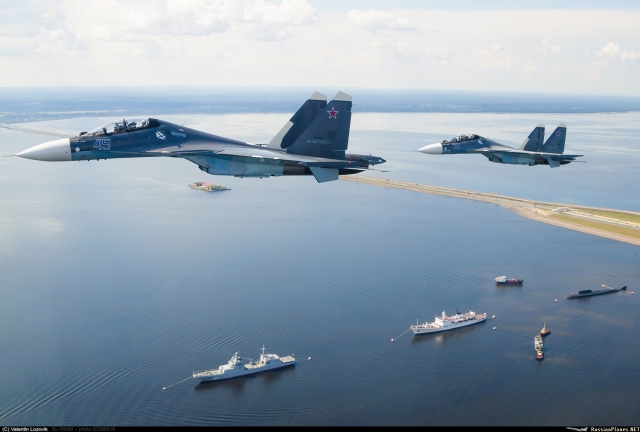 Baltic Sea Fleet will get new Su-30SM fighters
Baltic Sea Fleet will get new Su-30SM fighters
The aviation group in the Kaliningrad region is planned to be reinforced with the multirole Sukhoi Su-30SM fighters for both aerial combat and attacks on ground and naval targets.
Strengthening the Western Military District has been declared a priority vis-à-vis NATO's increasing activities in the Baltic, such as simulated missions of the USAF’s B-52H Stratofortress bombers against the Kaliningrad region or the latest Baltops 2021 two-week large-scale exercise off the coast of Denmark.
The Baltic Sea Fleet bears full responsibility for the defence of the Kaliningrad region. Currently, the backbone of its air units are still the legacy, albeit modernised, Su-27SM fighters operated by the 689th Independent Fighter Aviation Regiment (689.OGvIAP) in Chkalovsk.
There is only one squadron of twelve Su-30SMs, a part of the 4th Guards Naval Attack Aviation Regiment (4.OGvMShAP) based in Chernyakovsk, serving alongside the older Su-24M tactical bombers. The air combo is supplemented by deployment of the Bastion and Bal coastal missile systems.
The new Sukhois will most likely form the second squadron within the 4th Naval Attack Aviation Regiment. But it is not entirely excluded that they would finally end up serving with the 689.OGvIAP in the air defence role given that NATO countries in the region have started to deploy the F-35 Lightning II stealth fighters.
Su-30SM fighters have already become the most numerous new-built combat aircraft of Russian origin, with the Russian Federation - Aerospace Forces (RF VKS) and the Russian Federation - Naval Aviation (AVMF-RF) operating about 130 aircraft. Within the AVMF-RF, the two-seater Su-30SM are used both as fighter aircraft and strike aircraft and can carry a large number of high-precision weapons, including anti-ship missiles.
As the Russian Ministry of Defence (MoD) has signed a contract in 2020 for more than two dozen modernised Su-30SM2 fighters for naval aviation, it is well possible that the new aircraft for the Baltic Sea Fleet would be of that version, sporting indigenous avionics replacing the imported parts, N035 Irbis-E radar and Izd.117S turbofans from the Su-35S.
The Su-30SM2 will also have a new OSNOD system for multi-channel integrated communication, data exchange, navigation and identification. This system allows to integrate with other aircraft in the region into a networked automated system.
On 6 October 2020 Scramble Magazine wrote an in-depth article on how Russia's Naval Jet Aviation was saved.
Photo by Valentin Lozovik via Russianplanes.net

